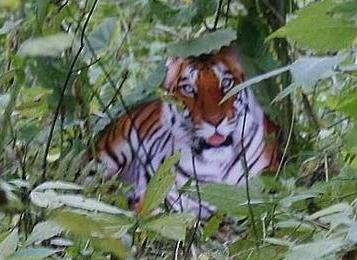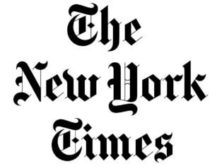
Zhou Zhenglong was put in jail for not reporting in with officials. Zhou's 2007 fauxtographs of this tiger (from a poster) in the wild sparked a three-year investigation, culminating in 13 reprimands or firings and his jailing.
Tiger fauxtographer Zhou Zhenglong, who created a national scandal two years ago with his faked photographs of rare tigers, was jailed for not following court instructions and properly checking in with Chinese authorities, Yahoo! News reported May 5.
The Wall Street Journal reported that the Chinese farmer said he was trying to track the tiger in the mountains when he violated his parole. Zhou was picked up April 30, Sina reported.
“Zhou broke some rules during probation. We took Zhou into custody in accordance with law,” said Zhong Qingsheng, a court publicity official, Sina reported.
Zhou is from Zhenping County in northern Shaanxi province, Yahoo! News reported.
The arrest comes just days after China’s State Forestry Administration announced the results of its three-year investigation into the matter.
Crienglish reported April 28 that the administration wrote on its Web site May 4 that tigers don’t exist in Zhenping County. Crienglish reported that the investigation found “no trace of wild South China tigers within an area of about 2,157 square kilometers around the county.” The investigation also found that Zhenping County’s environment can’t support the “long-term survival of a minimum viable population of South China tigers,” Crienglish reported.
The Straits Times reported that the tiger hasn’t been seen in the wild since 1964.
Global Times reported April 29 that the investigation was conducted by experts from Heilongjiang Provincial Wildlife Institute, Northeast Forestry University, Beijing Forestry University, Jilin Provincial Academy of Forestry Sciences and other six research institutes.
BACKGROUND
In 2007, Chinese farmer Zhou Zhenglong made headlines for his alleged photograph of an endangered tiger shown in Shaanxi Province.
Global Times reported that Zhou “claimed he risked his life and took more than 30 digital photographs of a South China tiger Oct. 11, 2007.” China Daily reported Oct. 18, 2007 that only one of the photos was released to the public Oct. 12, 2007 by the forestry department of Shaanxi Province at a news conference. But, “dozens of netizens expressed doubts” with the photo’s authenticity.
The Wall Street Journal’s China Real Time Report blogged May 6 that the “photos were authenticated and embraced by local officials who wanted to use them to boost tourism.”
Yahoo! News reported that local officials used Zhou’s photo “to promote tourism and a wildlife reserve, and rewarded him with 20,000 yuan ($2,930) before the fraud was exposed by local media and Internet experts.”
Global Times reported that a resident of Panzihua, Sichuan Province, exposed the fauxtograph when he noticed he had a poster of a tiger that looked a lot like Zhou’s photo.
Global Times reported that the Shaanxi Province Forestry Bureau maintained that the tigers might still be in the province in a Nov. 23, 2007 statement. On Feb. 4, 2008, the bureau apologized and said it didn’t have “substantial proof,” Global Times reported. On June 29, 2008, the bureau said all the photos were forged and Zhenglong was arrested.
Zhou was given a two and a half year sentence Sept. 27, 2008, Fox News reported.
StinkyJournalism reported Nov. 24, 2008 that Chinese courts decided instead to give Zhou a three-year reprieve and ordered him to return the cash reward. Part of his reprieve required that he check in with officials, Yahoo! News reported.
StinkyJournalism reported Dec. 22, 2008 when Zhou, who had been released after apologizing for the photos, said the photos were legitimate. StinkyJournalism reported that Zhou wrote, “I solemnly declare that the tiger picture was real, and was not faked.”
Thirteen officials were reprimanded or fired for their roles in the fauxtography scandal, StinkyJournalism reported July 1, 2008.




